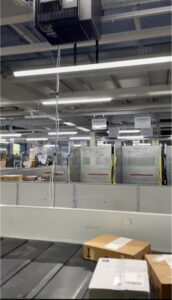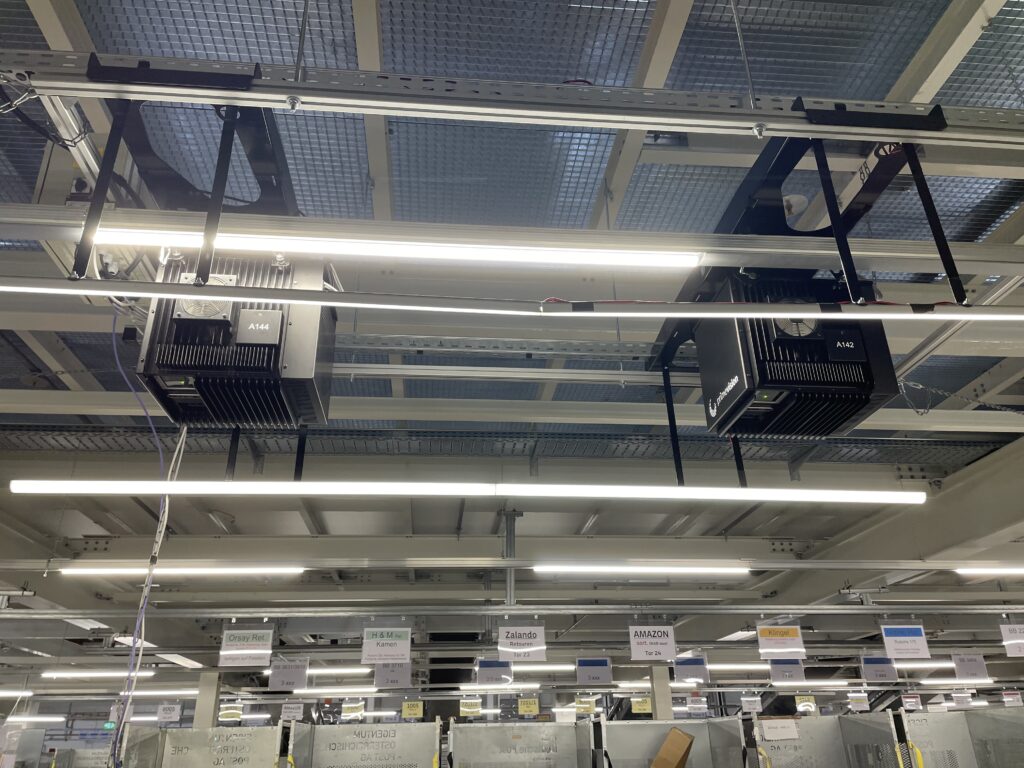As part of its Parcel+Post Expo showcase, Prime Vision took the opportunity to demonstrate its Flow Projector technology at Austrian Post’s logistics center in Vienna.
The sorting technology detects barcodes on parcels, sends out a request for the company’s barcode and then projects a number onto the parcel. The projected number is correlated to a specific roll cage, which allows employees to quickly sort parcels into their appropriate destinations. This identification system means that the staff sorting the parcels do not need to be specially trained in recognizing the myriad of often confusing and contradictory labels.
Dirk Jan Brouwer, product manager of Prime Vision, explained, ”Often it is the delivery drivers who are not used to analyzing complex labels at a glance. The simple projection means that even the newest or least specialist staff can operate this moving belt solution and ensure the parcel gets to the destination that it needs to go to.”
The new projection solution can simultaneously sort 10 packages, as it has a threshold of 40 characters and a maximum velocity of 80cm/second. This pace also enables the employees working with the machinery to keep up. The machine projects a green figure onto the identified package as this is the most easily identifiable visual frequency against all background materials and colors.
 The Flow Projector weighs approximately 25kg and sits 1.80m above the moving belt. For this reason, the technology is movable but not ideally suited to frequent mobile use. Therefore, Prime Vision typically carries out a pilot in its customer’s sorting facilities to enable the company to judge whether the product will add value to their operations and decide the best place to put it. From here, Prime Vision will observe where employees need to stand and place subsets of projectors in the appropriate areas.
The Flow Projector weighs approximately 25kg and sits 1.80m above the moving belt. For this reason, the technology is movable but not ideally suited to frequent mobile use. Therefore, Prime Vision typically carries out a pilot in its customer’s sorting facilities to enable the company to judge whether the product will add value to their operations and decide the best place to put it. From here, Prime Vision will observe where employees need to stand and place subsets of projectors in the appropriate areas.
Throughout the Parcel+Post Expo showcase demo, Brouwer emphasized that the technology works best when tailored to specific clients. He said that the Flow Projector can identify international parcels and project anything that’s on a computer keyboard. It does this by scanning everything that is on the parcel, comparing this data with the company’s metadata and filtering out the labels it needs to ignore. As this is a relatively simple device, comprising mainly barcode recognition, there are no captured images – only a barcode request to the company’s database of metadata.


